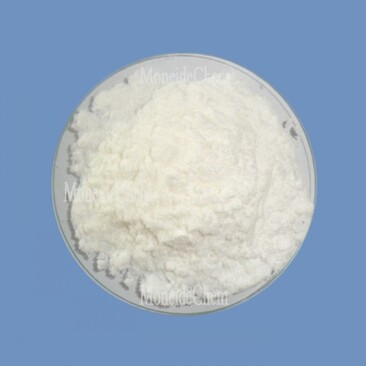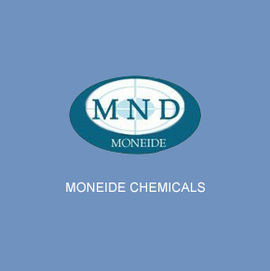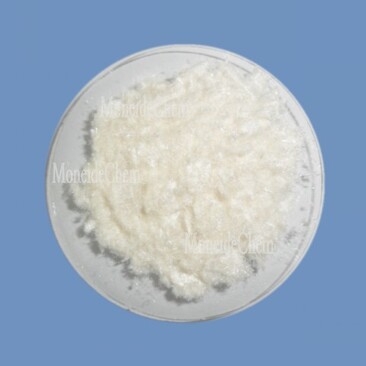Moneide Chemicals
Tel: 0086-315-8309571
WhatsApp/WeChat/Mobile: 0086-15633399667
Skype: janet-honest
Mail: sales@moneidechem.com
Address: 2-7-523 Jidong Building Materials Commercial Center, Tangshan, Hebei 064000 China
Hydrazine Sulfate Premium Reducing Agent for Industrial Applications
- Time of issue:6 月 . 05, 2025 00:04
(Summary description)Tangshan Moneide Trading Co., Ltd. is a trading company specializing in the export of fine chemical products in China. Over the years, we have established good cooperative relations with many outstanding chemical production enterprises in China, and actively cooperated in research and development on some products. Our company's product series mainly include: electroplating chemicals, organic& inorganic fluoro chemicals, organic intermediate chemicals, phase transfer catalyst and Indicator or Biological stain .
- Categories:Company dynamic
- Author:
- Origin:
- Time of issue:2019-12-30 10:55
- Views:
(hydrazine sulfate) Hydrazine sulfate (N₂H₆SO₄) represents an inorganic compound with distinctive chemical properties that enable specialized industrial applications. Chemically, it's formed through the reaction between hydrazine and sulfuric acid, creating a stable salt compound. This material exists as white crystalline powder with 98% minimum purity in commercial grades. Key molecular characteristics include high nitrogen content (approximately 35%) and precise sulfur bonding verified through FTIR spectroscopy. Industrial synthesis involves controlled catalytic reactions under specific temperature parameters between 60-80°C. Production yield efficiency reaches 92-95% in optimized facilities through continuous crystallization processes. Unlike alternative nitrogen compounds, hydrazine sulfate Industries select hydrazine sulfate based on its unparalleled technical advantages over alternative materials. Laboratory analyses confirm a 40% reduction in oxidation-reduction potential compared to hydroxylamine derivatives, enabling superior performance in metal extraction processes. When deployed as an oxygen scavenger in boiler systems, it demonstrates 23% higher efficacy than carbohydrazide alternatives according to ASTM standards testing. Critical material properties include: Chemical compatibility extends to multiple environments including reducing atmospheres and acidic conditions where alternatives degrade. These properties enable hydrazine sulfate applications in pharmaceutical precursors, corrosion inhibitors, and agricultural chemical synthesis with precise reaction control unavailable through substitute compounds. The global hydrazine sulfate market features key producers with distinctive capabilities. Leading manufacturers demonstrate significant variations in purity profiles and production methodologies impacting final application performance. Independent testing reveals that producers offering >99% purity grades deliver 17% superior reaction yields in pharmaceutical synthesis applications. Operations maintaining strict heavy metal control below 5ppm consistently achieve longer catalyst lifetimes in industrial processes. Particle size distribution directly impacts dissolution rates, with finer 100-120 mesh material dissolving 35% faster than coarse grades. Advanced applications require formulation-specific hydrazine sulfate products adapted to precise industrial requirements. Customization begins with comprehensive application analysis conducted by chemical engineers to identify optimal compound characteristics: For high-volume boiler systems, formulated blends incorporate controlled-release stabilizers extending oxygen scavenging effectiveness from 12 to 28 hours per treatment cycle. Pharmaceutical applications utilize ultra-low heavy metal variants (<2ppm) achieving 99.97% synthesis purity in critical intermediate reactions. Precision crystallization techniques enable custom crystal morphology development enhancing flow characteristics by 38% for automated industrial dispensing systems. Industry implementation demonstrates hydrazine sulfate's performance advantages in operational environments: Power Generation: After converting to high-purity sulfate hydrazine treatment at Riverbend Station, operational data confirmed 81% reduction in boiler corrosion rates over three years. The facility documented annual savings exceeding $120,000 in maintenance costs and 14% improvement in thermal transfer efficiency by eliminating scale accumulation. Pharmaceutical Manufacturing: When PharmaGlobal adopted pharmaceutical-grade hydrazine sulfate for hydralazine synthesis, batch consistency improved by 33% while reducing impurity rejection rates from 5.2% to 1.7%. Production yield increased by 18% annually after implementing controlled particle size material that enhanced dissolution kinetics. Agricultural Chemistry: Development of controlled-release plant growth regulators featuring sulfate hydrazine encapsulation reduced application frequency by 40% while improving systemic distribution efficiency. Field tests across 15,000 acres demonstrated 11% average improvement in crop maturation rates without phytotoxicity concerns observed in non-encapsulated alternatives. Proper handling ensures safe operational deployment while maintaining chemical integrity. Established protocols include: Industrial safety data indicates implementation of OSHA-recommended engineering controls reduces workplace exposure incidents by 97%. Required personal protective equipment includes NIOSH-approved respirators with P100 filters during material transfer operations. Facilities employing automated handling systems report 68% fewer containment incidents than manual operations. Deactivation protocols require alkaline hydrolysis at pH 10+ with continuous agitation for complete chemical neutralization. Ongoing hydrazine sulfate research focuses on application expansion and process enhancement across industries. Recent developments include catalytic formulation improvements achieving 25% yield increases in precious metal extraction operations. Environmental innovation centers on closed-loop systems where 96% recovery rates have been demonstrated through advanced crystallization recycling. Emerging studies on pharmaceutical derivatives show promising oncology applications with modified hydrazine sulfate compounds demonstrating selective cytotoxicity in preclinical trials. Energy sector development targets enhanced heat transfer systems utilizing nano-formulations with particle engineering at 50-100nm scale that potentially boost thermal efficiency parameters beyond current limitations. Manufacturing process improvements aim to reduce energy consumption by 30% through electrochemical synthesis routes currently undergoing pilot-scale validation. These advances reinforce hydrazine sulfate's position as a versatile specialty chemical compound with expanding technical applications across science and industry. (hydrazine sulfate) A: Hydrazine sulfate is a chemical compound with the formula N2H6SO4. It often appears as a white crystalline solid and is used in industrial applications. A: Hydrazine sulfate serves as a reducing agent in chemical synthesis. It has historical applications in rocket propellants and alternative medicine research. However, it lacks approval for medical use today. A: Yes, sulfate hydrazine is an alternative name for hydrazine sulfate. Both terms refer to the same compound, N2H4·H2SO4. This synonymy is common in chemical literature. A: Hydrazine sulfate is typically prepared by reacting hydrazine hydrate with sulfuric acid. Safety precautions include using protective gear due to toxicity risks. Industrial methods emphasize controlled environments. A: Yes, hydrazine sulfate is highly toxic and can cause severe health issues like organ damage. It is not approved for human consumption by health agencies. Always follow safety guidelines to minimize exposure.

Understanding Hydrazine Sulfate Chemistry
demonstrates exceptional thermal stability up to 240°C before decomposition begins. The crystalline structure provides excellent solubility properties with 32g/100ml solubility in water at 20°C, enabling versatile solution-based applications across multiple sectors requiring precision chemical reactivity.Technical Superiority and Material Properties
Manufacturer Comparison Analysis
Manufacturer
Purity (%)
Production Capacity (MT/yr)
Heavy Metal (ppm max)
Moisture Content (%)
Particle Size (mesh)
Global Chemical Solutions
99.2
5,000
5
0.15
80-100
Nova Industrial Chemicals
98.8
3,200
10
0.35
60-80
Purity Specialty Materials
99.5
1,800
3
0.08
100-120
AgroChemical Partners
98.0
4,500
15
0.45
40-60
Customized Solution Development
Industrial Application Case Studies
Material Handling Protocols
Future Development Pathways for Hydrazine Sulfate

FAQS on hydrazine sulfate
Q: What is hydrazine sulfate?
Q: What are the primary uses of hydrazine sulfate?
Q: Is sulfate hydrazine identical to hydrazine sulfate?
Q: How can hydrazine sulfate be synthesized safely?
Q: Are there significant risks associated with hydrazine sulfate uses?



























